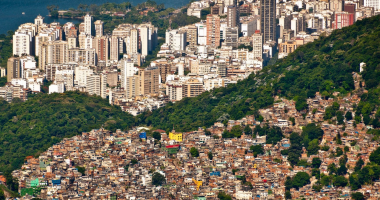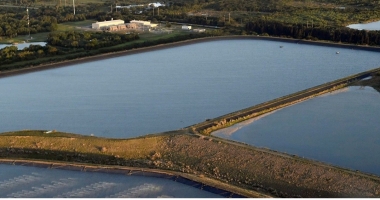Climate, Health and Equity Brief
States ablaze, communities underwater and a new America
September 21, 2020

The Climate, Health & Equity Brief is GMMB’s take on the week’s news on the current impacts of climate change. If you haven’t subscribed yet, you can do so by clicking here.
Hot Topic: America’s imperiled coasts. The devastating fires throughout the American West have dominated news coverage in recent weeks, and understandably so. More than 42,500 fires have scorched nearly 7 million acres in the U.S. this year. California’s wildfire season is the worst in recorded history, with smoke now impacting air quality as far away as Europe and U.S. wildfire-related carbon emissions the highest in nearly two decades. Meanwhile, Argentina, Australia, Brazil, Indonesia and Siberia have also experienced particularly devastating wildfire seasons this year, with the vicious cycle of climate change and deforestation to blame for much of the destruction.
Meanwhile, Hurricane Sally has devastated parts of coastal Alabama, Florida and Georgia this week, with record-setting rainfall and catastrophic flooding leaving at least one person dead, 550,000 without power and entire communities underwater. And in Greece, a rare Mediterranean hurricane made landfall this morning, bringing heavy winds and flash flooding that has led to significant property damage. While Sally alone has caused an estimated $3 billion in damage, four new tropical cyclones are already forming in the Atlantic Ocean, marking only the second time in recorded history that four or more storms have formed simultaneously. If they make landfall as expected in the coming weeks, up to 11 feet of storm surge could ravage the Southeast from Louisiana to Florida.
Climate science tells us these extreme and unprecedented weather events are no longer an anomaly. A new analysis warns that without sharply reducing our fossil fuel habit, these events could make parts of the Western and Southeastern U.S. uninhabitable within the next 45 years, forcing one in 12 Americans to migrate to more livable conditions elsewhere in the country. In addition to displacing tens of millions of people, this shift would almost certainly widen the existing gulf between the rich and poor, disrupt American farming practices and accelerate the urbanization of cities ill-equipped for the influx, leading to an America vastly different from the country we know today.
—Matt & Traci, GMMB
Health
Hospitals in Oregon reported a 10 percent increase in emergency room visits this week as ash and smoke from the nearly five million acres burning across the Western U.S. choke the air. (Reuters)
Wildfire smoke from the Western U.S. is now impacting air quality as far away as Germany, with scientists predicting that carbon monoxide from the smoke could remain in the atmosphere for a month. (Los Angeles Times)
Making landfall on Wednesday, Hurricane Sally delivered catastrophic flooding and destructive winds that have devastated parts of Alabama, Florida and Georgia, with four months’ worth of rain falling in 4 hours. (NPR, CNN)
A new analysis revealed that as rising carbon emissions fuel heat and extreme weather in the Western and Southeastern U.S., one in 12 Americans could be forced to migrate northward over the next 45 years. (The New York Times)
For just the second time in history, four tropical cyclones apart from Hurricane Sally are simultaneously forming in the Atlantic Ocean, threatening up to 11 feet of storm surge from Louisiana to Florida. (CNN)
At least five countries outside of the Western U.S. have also seen some of their worst wildfire seasons this year as the burning of fossil fuels trigger hotter and drier conditions around the world. (The New York Times)
Warming sea temperatures in the Mediterranean have triggered Medicane Ianos—a rare, hurricane-like storm that made landfall in Greece early Friday morning, causing widespread property damage from heavy winds and flash flooding. (CNN)
Equity
Politics & Economy
A new report found that by 2035, the U.S. can generate 100 percent carbon-free electricity without raising energy prices by deploying hydrogen or carbon capture technology. (Reuters)
The Trump Administration has chosen a longtime climate denier for a senior leadership position with the National Oceanic and Atmospheric Administration, which produces a majority of federally funded climate research. (The Washington Post)
A recent study found that suburban women and Republican womenincreasingly consider the climate crisis to be a major issue and an immediate threat to their communities. (The New York Times)
On a visit to California, Mr. Trump dismissed climate change as a factor in the wildfires, pointing to poor forest management by the state of California despite the fact that nearly 60 percent of the state’s forests, and a majority of the acres burned, are on federal lands. (San Francisco Chronicle, Politico)
Action
Kicker
Need a smile today? Check out the finalists for this year’s Comedy Wildlife Photography Awards.
“I don’t think science knows, actually.”
– President Donald J. Trump






